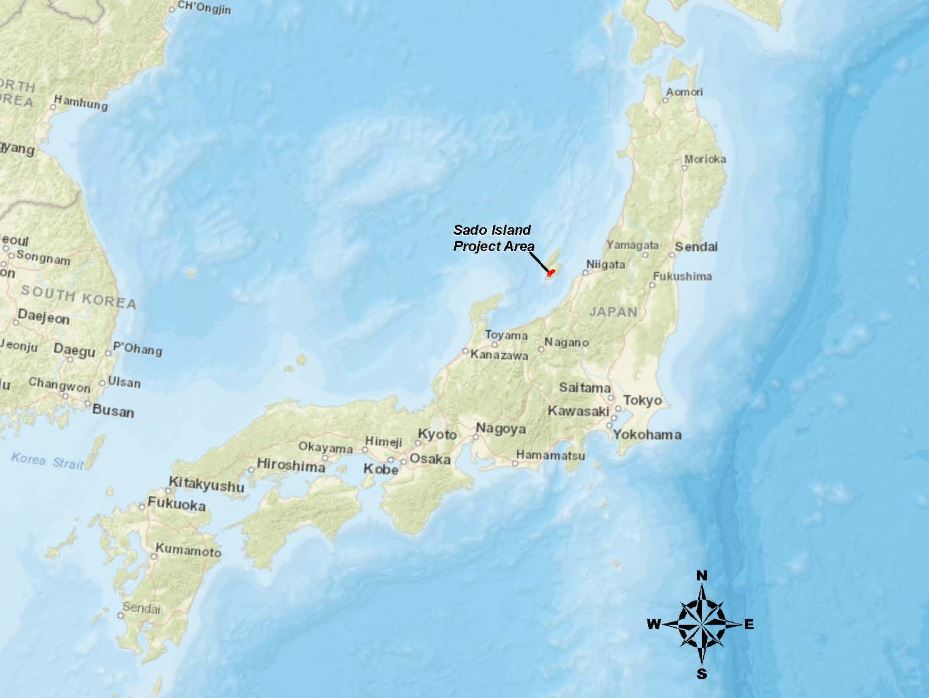Irving up 22% on Japan drilling results

Irving Resources Inc. [IRV-CSE] shares rallied sharply Tuesday November 5 after the company said it has encountered significant gold-silver mineralization while drilling on its 100%-owned Omu Gold Project in Japan.
Irving is a junior exploration company with a focus on Japan. Through a subsidiary, Irving it also holds a project venture agreement with Japan Oil, Gas and Metals National Corp. (JOGMEC) for joint regional exploration programs in the Republic of Malawi.
In Japan, Irving is focused on identifying high-silica, high-grade epithermal gold-silver veins that could potentially be suitable for use as smelter flux in many operating base metal smelters throughout the country. Precious metals are recovered during the smelting and refining process.
In August 2016, Irving secured the 2.98 km2 Omui mining license on the island of Hokkaido, Japan.
To augment its land position, Irving filed 55 prospecting licenses covering an additional 170.56 km2 of prospective ground encompassing the entirety of the northeast-trending Omu volcanic graben, host to multiple high-grade epithermal gold-silver veins exploited at the historic Omui and Hokuryu mines prior to World War II.
As noted by Resource World Magazine, lode gold mining in Japan dates back to 1370 and continued until 1980 with sporadic production from 76 mines over this 600-year period.
Irving believes the Omu volcanic graben has the potential to host significant undiscovered high-grade veins. In April 2019, Newmont Goldcorp Corp., [NGT-TSX; NEM-NYSE] signalled that it shared Irving’s enthusiasm by acquiring 3.7 million Irving shares for $2.16 a share, marking a total investment of US$6 million.
Irving recently launched a 5,115-metre drilling program at the Omu Project. It said the aim was to focus on the Omui mine site, where Irving has developed three high-grade drill targets, Honpi, Nanko and Sakinyama.
It said 3,100 metres would be allocated to deep holes designed to test zones of strong resistivity interpreted to be areas of silicification potentially associated with vein mineralization. The balance of the program, it said, would feature shorter holes designed to test down-dip extensions of outcropping high-grade veins, vein breccias and zones of stockwork veining.
“Omui is one of three targets (Omui, Omu Sinter, Hokury) at our Omu gold-silver project, but its high-grade veins attracted us to the over 160 square-kilometre entire Omu area in 2016,” said Irving President and director Akiko Levinson.
In an update on Tuesday, the company said all eight widely-spaced drill holes at Omu Sinter encountered significant gold-silver mineralization, including notable vein intercepts in seven of eight holes.
Highlights include 1.33 metres of 29.77 g/t gold and 575.7 g/t silver, including 0.32 metres of 118.5 g/t gold and 1,410.0 g/t silver in hole 190MS-002.
Irving shares rallied on the news, jumping 22.5% or 51 cents to $2.77. The shares are trading in a 52-week range of $1.08 and $3.25.
Given that the first eight Phase One drill holes are widely scattered along approximately one kilometre of strike length along the north-south trending Omu Sinter target, encountering strongly mineralized vein intercepts in nearly all holes is considered highly encouraging, the company said in a press release.
The company said the veins appear to fall into two categories, gold-rich (silver to gold ratios of less than 20 to one) and silver-rich (higher silver to gold ratios, often greater than 100 to one), probably reflecting two pulses of precious metal mineralization in this complicated hot spring system.
Similar dual mineralized pulses are evident in veins at Omui Mine site, approximately 10 km south of Omu Sinter, the company said.
So far, eight diamond drill holes have been completed at Omui Mine site, totalling approximately 1,300 metres. Irving expects to complete several more drill holes before winter break in mid-December, perhaps totalling 3,000 metres of the planned 5,000-metre Phase One program.
Completion of Phase One is expected by May, 2020, the company said.
